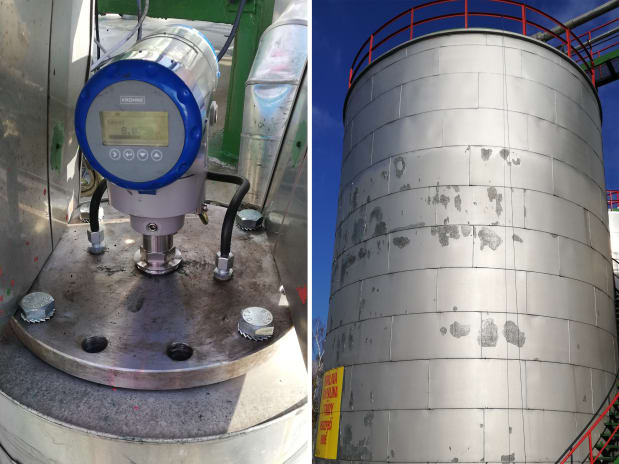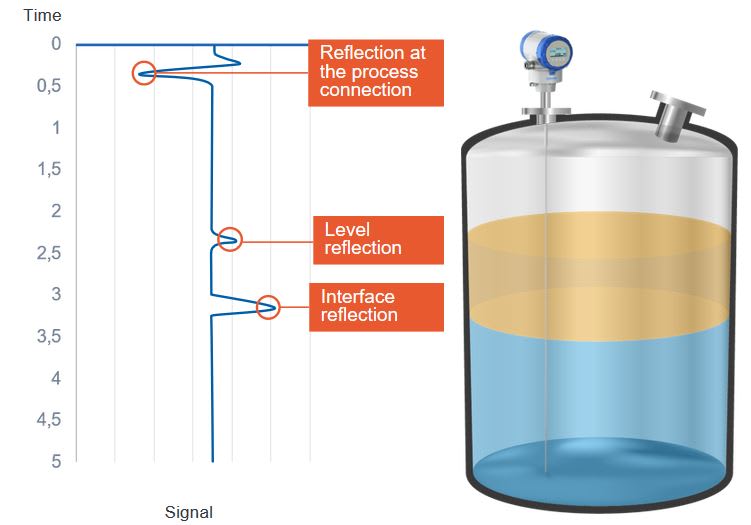Interface measurement in a wastewater tank
Application Note | Chemical
- Determining the changeover point to separate process water and oil from benzol and tar production
- Retrofitting a water tank with guided wave radar technology
- Safe water discharge without oil contamination

Background
A producer of basic aromatic chemicals operates a production site for coal tar and crude benzol in the Czech Republic. The plant has a processing capacity of 450,000 tons of coal tar as well as 160,000 tons of crude benzol.
Measurement requirements
Environmental regulations stipulate that all process water from benzol and tar production must be collected and properly treated. The company therefore stores its used water in a 12 m / 39.4 ft high collection tank before it is transported to a wastewater treatment plant.
As a rule, the collected water can be directly transferred to wastewater treatment. However, on some occasions the water is contaminated with residual oil from production which forms a layer on top of the water. Draining the tank must therefore stop before residual oil is unintentionally discharged.
In order to precisely determine the switching point at which the valve for water discharge is closed and the valve for oil removal is activated, an interface measurement of the two liquids is required. For many years, the customer had used a BM100 radar level transmitter from KROHNE for process control of the tank. As part of a routine plant update, the tank has been identified for retrofitting with the latest guided radar technology.
KROHNE Solution
Having had a positive experience in the past, the chemical company once again decided in favour of a guided radar transmitter from KROHNE. The tank was retrofitted with the OPTIFLEX 7200. This level transmitter is the high-end guided radar for level and interface measurement in the chemical and other industries. It was provided with a single cable probe (Ø4 mm / 0.16") and installed via a flange (DN150) onto a nozzle.
The guided radar measuring principle is based on the TDR (time domain reflectometry) technology. Generally speaking, the guided radar emits an electromagnetic pulse that travels along the probe at the speed of light. If only water is in the tank, the pulse is then partly reflected by the liquid and sent back up the probe to the transmitter. The transmitter measures the time when the pulse is emitted to when it is received (so called “time of flight”) that can then be converted into a distance. The smaller the distance between the top of the probe and the surface of the water, the higher the level in the tank.
However, once oil is present on top of the water, the electromagnetic pulse traveling along the probe is partly reflected by the oil (a medium with a low dielectric constant of only εr=2) and a larger part of the pulse is reflected by the water (a medium with a much higher dielectric constant of εr= 80). Utilising the different times of flight, the device is able to calculate the tank level (i.e. the first reflection) as well as the oil/water interface (i.e. the second reflection).
Customer benefits
Interface measurement with the OPTIFLEX 7200 helps the customer to continuously monitor and control its water discharge. Oil contamination of the drained water is effectively prevented. In the event of oil forming on top of the water, the switching point is reliably identified and the valve for water drainage closed. In this way, environmental regulations are always met. The residual oil can be recovered and fed back to the process, saving the customer a lot of money in the long run.




